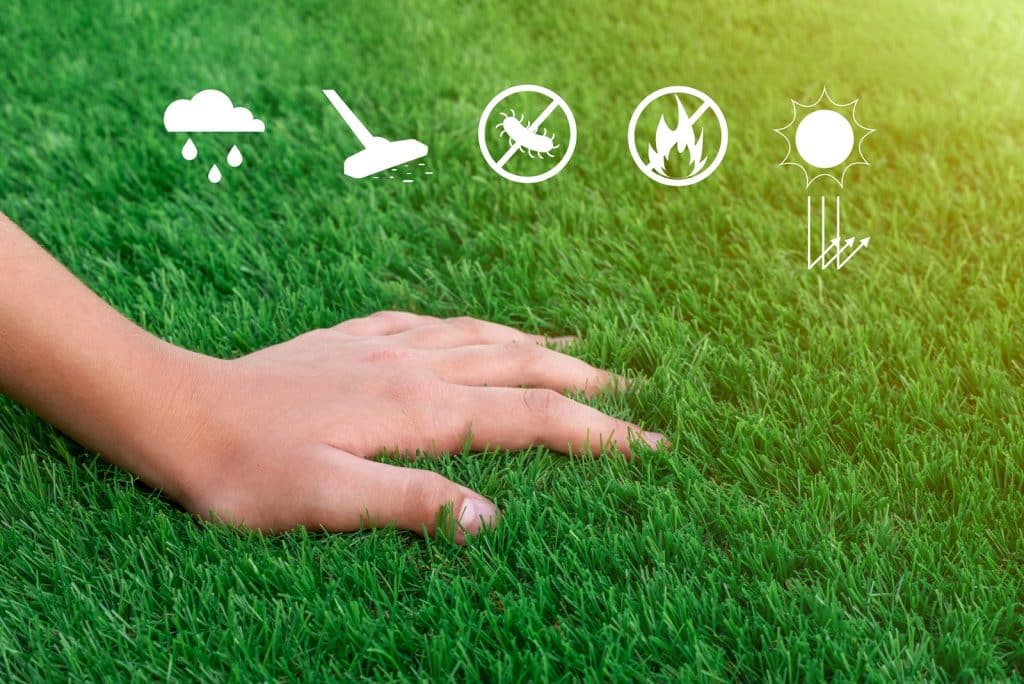What Is the Most Durable Type of Lawn Grass?
Finding the right type of grass for a durable lawn can make a significant difference, especially in Texas, where weather conditions can be extreme and unpredictable. The ideal lawn grass needs to withstand heavy foot traffic, endure hot and dry conditions, and recover from damage. This article will guide you through the most durable types of grass and how to choose the best fit for your landscape.

What Makes Grass Durable?
Durability in lawn grass largely depends on factors like foot traffic tolerance, heat resistance, drought tolerance, and recovery rate after damage. Texas weather—hot summers and dry conditions—demands resilient grasses that can thrive with minimal maintenance.
Top Durable Grass Types for Texas Lawns
- Bermuda Grass
- Overview: Known for its dense growth and hardiness, Bermuda grass is a warm-season grass that can withstand heavy use and regrows quickly after damage.
- Features: Tolerant to drought and heat, Bermuda grass is ideal for Texas lawns that experience high foot traffic.
- Varieties: Common varieties include Tifway, Celebration, and Tahoma 31, each providing excellent resilience and durability.
- Zoysia Grass
- Overview: Zoysia is a favorite for its lush, soft texture and tolerance to both heat and foot traffic.
- Features: This grass establishes slowly but creates a thick mat that chokes out weeds, making it low-maintenance once mature.
- Varieties: Some popular types include Emerald, El Toro, and Zeon, which are all well-suited for Texas weather.
- Buffalo Grass
- Overview: A native Texas grass, Buffalo grass is highly drought-resistant and requires minimal mowing and watering.
- Features: Although not the best for heavy foot traffic, it’s ideal for larger, low-maintenance areas where durability against heat and drought is essential.
- Varieties: Varieties like Prairie and Texoka are often chosen for their resilience in Texas’s climate.
- St. Augustine Grass
- Overview: Known for its shade tolerance, St. Augustine grass is often used in areas with partial shade.
- Features: While less tolerant to high traffic, St. Augustine thrives in shaded spots with some sunlight and provides lush coverage.
- Varieties: Floratam and Palmetto are popular varieties, with Floratam being the most common choice in Texas for its resilience in both shaded and sunny areas.
- Fescue Grass
- Overview: Although not a warm-season grass, fescue varieties can be ideal for cool-season lawns and are highly resistant to drought and wear.
- Features: Fescue has a deep root system, which helps it tolerate drought better than most cool-season grasses.
- Varieties: Fine fescue and tall fescue are both viable options for areas of Texas that experience cooler temperatures in winter.
Key Factors in Choosing Durable Grass for Texas Lawns
- Traffic Tolerance
- Bermuda and Zoysia are the best choices for lawns expecting high foot traffic, as both grasses recover quickly and grow densely to minimize bare spots.
- Drought Resistance
- For lawns with limited access to water, Buffalo grass and Bermuda grass are highly drought-tolerant and require minimal irrigation.
- Shade Adaptability
- For shaded areas, St. Augustine and Zoysia grass varieties provide good options, with St. Augustine offering the best shade tolerance among warm-season grasses.
- Maintenance Requirements
- Low Maintenance: Buffalo grass is ideal for low-maintenance areas, requiring infrequent mowing and minimal watering.
- Moderate Maintenance: Zoysia and Bermuda grass are slightly more maintenance-intensive but provide beautiful, durable coverage with regular care.
When to Plant Durable Grass in Texas
The best time to plant warm-season grasses like Bermuda, Zoysia, Buffalo, and St. Augustine in Texas is from late spring to early summer. This period allows roots to establish before the peak summer heat. For cooler season grasses, like fescue, early spring or late fall provides the best conditions for root establishment.
Proper Lawn Care for Maximum Durability
- Watering: Proper irrigation is essential, but each grass type has different needs. Warm-season grasses, like Bermuda and Zoysia, thrive with deep, infrequent watering. Buffalo grass requires even less water and is ideal for Texas drought conditions.
- Mowing: Maintain appropriate mowing heights to promote root growth. For Bermuda grass, mow at 1-2 inches, while Zoysia and St. Augustine thrive at 2-3 inches.
- Fertilization: Choose a fertilization schedule that suits your grass type and the time of year. Most warm-season grasses benefit from a slow-release fertilizer applied in early spring and late summer.
- Aeration: Annual aeration helps to break up compacted soil and allows water, nutrients, and air to reach the roots, especially for denser grasses like Zoysia and Bermuda.
Lawn Renovation Options
For lawns that have been damaged by drought, heavy traffic, or extreme Texas weather, consider these options:
- Overseeding: For cool-season fescues, overseeding in the fall can restore bare patches.
- Sod Installation: Bermuda and Zoysia grass can be installed as sod, providing instant durability and growth.
- Artificial Turf: For areas with heavy use or limited water access, consider Clearfork’s artificial turf solutions, providing year-round green coverage without the maintenance.
Clearfork Lawn Care is here to help you achieve the perfect, durable lawn for your Fort Worth property. Whether you’re looking for expert advice on grass types, need assistance with lawn maintenance, or want a stunning landscape design, our experienced team can make it happen. Contact us today at 817-705-9352 to schedule your consultation for lawn care, artificial turf, and landscape design services to keep your yard lush and resilient, season after season.
